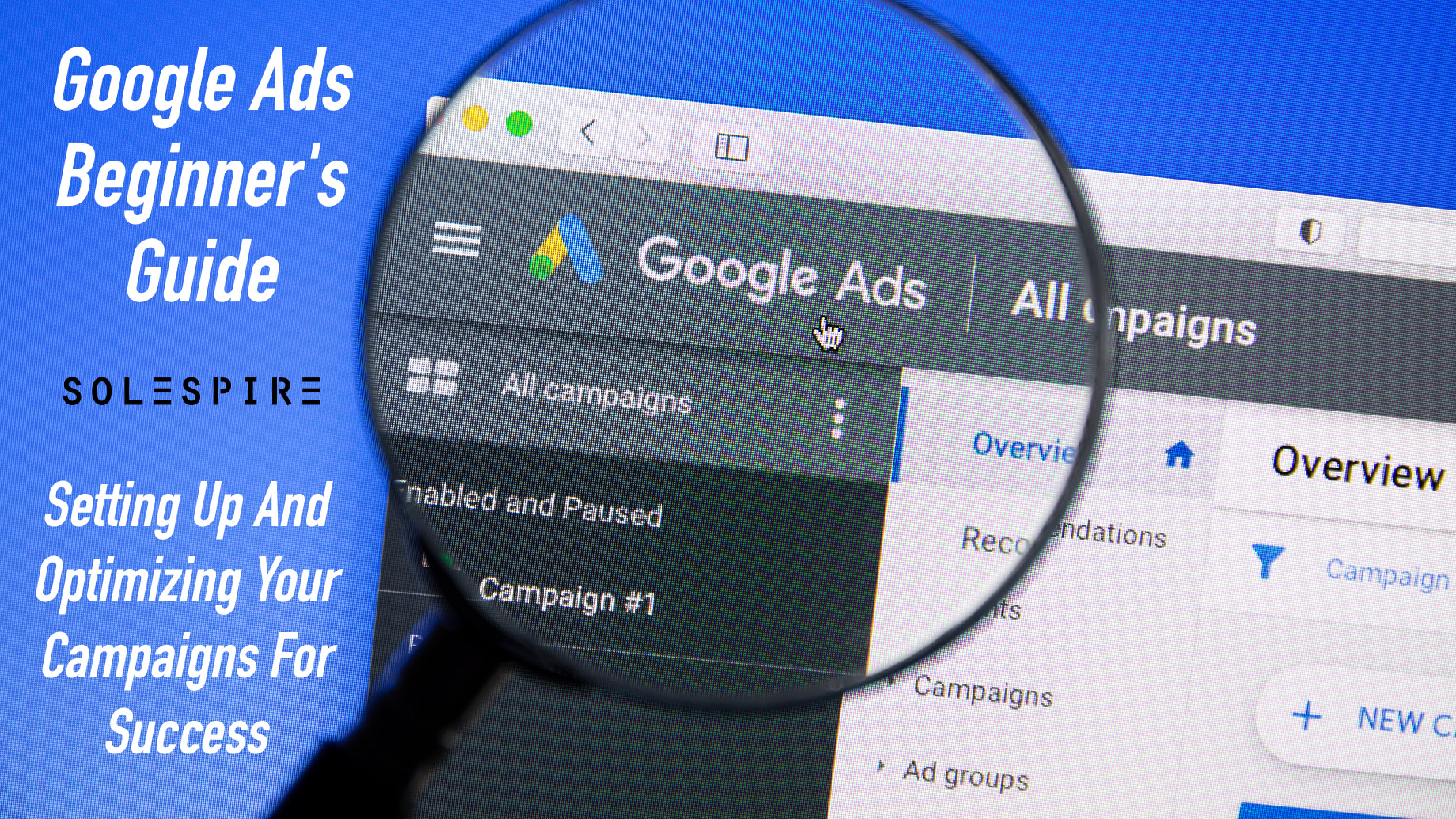
Google Ads is a popular advertising platform that allows businesses to reach millions of potential customers through targeted online advertising. It works by displaying advertisements to users who have expressed an interest in related products or services. With Google Ads, businesses can choose to advertise through text ads, display ads, video ads, or even shopping ads, depending on their advertising goals.
Google Ads operates on a pay-per-click (PPC) model, meaning that businesses only pay when a user clicks on their advertisement. This makes it an accessible advertising option for businesses of all sizes, as they can start small and gradually increase their budget as their campaigns show positive results. Additionally, Google Ads offers a high level of targeting, allowing businesses to define their target audience by demographic, interests, location, and more.
The key benefits of using Google Ads for advertising include increased visibility, improved brand recognition, and higher conversion rates. By reaching a large and highly-targeted audience, businesses can increase their visibility and reach new customers who are most likely to be interested in their products or services. Additionally, by regularly testing and optimizing their campaigns, businesses can improve their brand recognition and conversion rates, leading to higher ROI.
Learn everything you need to know to launch a successful Google Ads campaign with the following comprehensive guide that covers setting up your first campaign, creating compelling ads, measuring and optimizing performance, and best practices for a successful campaign to boost your online visibility and reach your targetted audiences:
Setting Up Your First Google Ads Campaign
Setting up your first Google Ads campaign can seem intimidating, but with the right approach, it can be a simple and straightforward process. Here are five steps to follow to get started:
- Define your advertising goals: Before creating your first campaign, it’s important to define your advertising goals. Are you looking to increase website traffic, generate leads, or sell a specific product? Understanding your goals will help you create a more effective and focused campaign.
- Identifying your target audience: Once you’ve defined your goals, it’s time to identify your target audience. Who are your ideal customers, and what are their interests and behaviours? Use this information to create a customer profile and define your target audience in your Google Ads campaign.
- Create compelling ad copy: Ad copy is one of the most important components of a successful Google Ads campaign. Write clear, concise, and compelling ad copy that highlights the benefits of your products or services and encourages users to click through to your website.
- Utilizing negative keywords: Negative keywords help to ensure that your ads are only shown to users who are truly interested in what you have to offer. Make a list of words and phrases that are not relevant to your business or products, and add them as negative keywords in your Google Ads campaign.
- Setting your budget and bids: Finally, set your budget and bids for your Google Ads campaign. Your budget is the maximum amount you’re willing to spend on your ads each day, while bids are the maximum amount you’re willing to pay for each click. Be sure to set a clear and realistic budget and adjust your bids as needed based on the performance of your campaign.
By following these steps, you can set up your first Google Ads campaign and start reaching a large, targeted audience in no time.
Creating Compelling Ads
Creating compelling ads is an essential part of a successful Google Ads campaign. Here are five tips and best practices to follow when creating your ads:
- Use clear and concise ad copy: Your ad copy should be clear and concise, with a focus on the benefits of your products or services. Use simple language that’s easy to understand, and avoid using industry jargon or overly complex language.
- Highlight the unique selling points of your products or services: Your ads should focus on what makes your products or services unique and different from those offered by your competitors. Use this information to create a compelling value proposition that sets your business apart.
- Incorporate eye-catching visuals: Visuals are a powerful tool for attracting the attention of potential customers. Consider incorporating eye-catching images or graphics into your ads, or using video ads to showcase your products or services in action.
- Use a call-to-action (CTA): A strong call-to-action (CTA) is critical for encouraging users to take action, such as clicking through to your website or making a purchase. Use a clear and concise CTA that speaks to your target audience and motivates them to take action.
- Test and optimize your ads regularly: Regular testing and optimization of your ads is essential for improving their performance and getting the best results. Use split testing to compare different versions of your ads and make adjustments based on the data and insights you gather.
By following these tips, you can create compelling ads that drive results and help you reach your advertising goals. Whether you’re advertising through text ads, display ads, video ads, or shopping ads, the key is to create ads that are relevant, engaging, and optimized for your target audience.
Measuring and Optimizing Your Campaign Performance
Measuring and optimizing your campaign performance is essential for maximizing the return on investment (ROI) of your Google Ads campaign. Here are some key metrics to monitor and tips for optimizing your campaigns:
- Monitor key performance metrics: Some key metrics to monitor include impressions, clicks, click-through rate (CTR), conversion rate, and cost per acquisition (CPA). Regularly review these metrics to understand how your campaign is performing and identify areas for improvement.
- Use conversion tracking: Conversion tracking is a critical tool for measuring the success of your Google Ads campaigns. Set up conversion tracking to measure the number of conversions, such as sales or leads, generated from your ads.
- Optimize your bids and budget: Based on the data and insights you gather, regularly adjust your bids and budget to optimize your campaign performance. For example, if your conversion rate is low, you may need to adjust your bids or target a different audience.
- Test and experiment with different ad formats: Experimenting with different ad formats can help you identify the best-performing format for your target audience. For example, try testing text ads, display ads, video ads, or shopping ads and compare the results to find the best format for your campaign.
- Refine your targeting: Regularly review and refine your targeting to ensure that your ads are reaching the right audience. Use tools such as Google Analytics to understand the behaviour and interests of your target audience, and adjust your targeting accordingly.
By monitoring and optimizing your campaign performance, you can maximize the return on investment of your Google Ads campaigns and achieve your advertising goals. With regular testing and experimentation, you can continually improve your campaigns and achieve even better results.
Common Mistakes to Avoid in Google Ads
Google Ads can be a powerful tool for reaching your advertising goals, but there are also common mistakes that can hinder your success. Here are some of the most common mistakes to avoid when running your Google Ads campaigns:
- Ignoring the importance of keyword research: Keyword research is a critical step in the planning process for your Google Ads campaigns. Neglecting to conduct thorough keyword research can result in your ads appearing for irrelevant search terms and not reaching your target audience.
- Neglecting to split test your ads: Regular split testing of your ads is essential for identifying the best-performing ad formats and making optimizations. Neglecting to split test your ads can limit your ability to maximize the return on investment of your campaigns.
- Overcomplicating your ad copy: Simple and concise ad copy is more effective than complicated or overly verbose ad copy. Keep your ad copy focused on the benefits of your products or services, and avoid using industry jargon or overly complex language.
- Neglecting to use a strong call-to-action (CTA): A strong CTA is critical for encouraging users to take action, such as clicking through to your website or making a purchase. Neglecting to use a clear and concise CTA can limit the effectiveness of your ads.
- Not setting realistic goals and budgets: Setting realistic goals and budgets is an important part of the planning process for your Google Ads campaigns. Neglecting to set realistic goals and budgets can result in overspending.
By avoiding these common mistakes, you can improve the performance of your Google Ads campaigns and achieve better results. Whether you’re just getting started with Google Ads or you’re an experienced advertiser, taking the time to understand these common pitfalls can help you achieve your advertising goals.
Best Practices for a Successful Google Ads Campaign
A successful Google Ads campaign requires careful planning and execution. Here are some best practices to help you achieve your advertising goals:
- Conduct thorough keyword research: Keyword research is a critical step in the planning process for your Google Ads campaigns. Take the time to conduct thorough research to identify the most relevant and profitable keywords for your campaign.
- Create compelling ad copy: Your ad copy should be simple, concise, and focused on the benefits of your products or services. Use strong CTAs to encourage users to take action, such as clicking through to your website or making a purchase.
- Optimize your landing page: Your landing page is a critical component of your Google Ads campaigns. Make sure your landing page is optimized for conversions, with a clear and concise call-to-action, relevant content, and easy-to-use navigation.
- Regularly monitor and optimize your campaigns: Regularly monitor your campaigns to identify areas for improvement, and make optimizations as needed. Use conversion tracking to measure the success of your campaigns and adjust your bids and budget accordingly.
- Utilize ad extensions: Ad extensions are a useful tool for providing additional information about your products or services, such as location information or reviews. Use ad extensions to enhance the visibility and relevance of your ads.
By following these best practices, you can increase the visibility and relevance of your ads, improve the performance of your campaigns, and maximize the return on investment of your advertising efforts. Whether you’re just getting started with Google Ads or you’re an experienced advertiser, these best practices can help you achieve your advertising goals.
Conclusion
Google Ads can be a powerful tool for reaching your advertising goals, but it’s important to approach your campaigns with a strategic and informed perspective. Whether you’re just getting started with Google Ads or you’re an experienced advertiser, taking the time to understand the best practices and common mistakes can help you achieve your advertising goals.
From conducting thorough keyword research and creating compelling ad copy, to regularly monitoring and optimizing your campaigns, there are many steps you can take to increase the visibility and relevance of your ads. By following these best practices and avoiding common mistakes, you can improve the performance of your campaigns and maximize the return on investment of your advertising efforts.
Overall, Google Ads is a valuable tool for businesses of all sizes looking to reach their target audience and achieve their advertising goals. By taking the time to understand how to effectively use Google Ads, you can make the most of this powerful platform and achieve your desired results.

